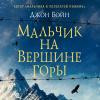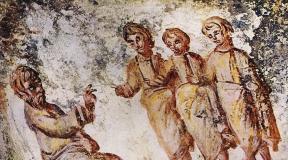Kirill Soloviev: “Atlas” of the revolution and the “rules of the game” in politics. Soloviev Kirill Andreevich State awards, honorary titles, gratitude
It is impossible to answer such a question in monosyllables. Of course, just say yes. If we are talking about bureaucracy, then modern bureaucratic language and decision-making traditions developed in the 19th century. Our modern ideas about modernization and industrialization go back to the image of the future that was relevant for a citizen of the Russian Empire in the 19th century. All the usual ideological trends - liberalism, socialism, conservatism - finally took shape in the 19th century. Finally, Russian culture, Russian language, Russian literature are products of the century before last. At least for this reason, the Russian Federation in its modern form is the legal successor of the Russian Empire.
However, the Russian Empire was still very different from modern Russia - and not only in size. This was a much more complex phenomenon. The Russian Empire was, in the full sense of the word, a multinational and multi-religious power. Russians did not make up the majority of the country's population (44%). There was a majority of Orthodox Christians, but not an overwhelming majority (about 70%, including Old Believers). The empire was complex. Many of its outskirts required a special management regime. Under such circumstances, there could not be a single legal space. Those legal norms by which the Kingdom of Poland lived (after the uprising of 1863-1864 - the Vistula provinces) dated back to Napoleonic times. In the Baltic provinces (the territories of modern Estonia and Latvia), the legislation of the times of Swedish rule partially remained. Finally, the estates lived in different legal dimensions. Thus, the peasantry was predominantly judged according to the norms of customary law, rarely encountering the crown court. The merchants and the Cossacks had their own bodies of self-government... The clergy and military personnel had their own courts. Russia was very different.
Secondly, Russia of the 19th century is distinguished by the presence of society - not in the sociological, but in the political scientific sense of the word, when society itself recognizes itself as such. When it is not a cog in a huge state machine, but claims to be self-sufficient. Such a society began to take shape in Russia at the end of the 18th century; during the 19th century it became more complex, increased in number, democratized and demanded more and more for itself and for the country. At first it was very small in number, then it made up only a few percent of the Russian population, but nevertheless these were the percentages that turned out to be capable of self-organization. These were the leaders of the zemstvo, city government, journalists, and finally, the increasingly numerous readers of periodicals. It is difficult to say whether there was a civil society in the Russian Empire, but its elements undoubtedly took place. This is a fundamental difference between the long 19th century, which ended in 1917.
Thirdly, the Russian Empire of the early twentieth century is a dynamically developing country, and from various points of view. Usually in this regard they talk about economics. This is true because in the 1910s. Russia ranked first in terms of growth rates. The demographic factor is no less significant. According to the results of the 1897 census, the population of Russia was more than 126 million people, and by 1914, according to minimal estimates, about 166.5 million. During this relatively short period of time, the population of Russia increased by 40 million people. This created both opportunities and difficulties. Russia is a very young country. A significant part of its population were children and adolescents who were dependent on their parents. A growing population, among other things, means a shrinking peasant allotment. The growing population is a contradiction within the community, when most often it was not rich and poor peasants who clashed, but older and younger representatives of the rural “world”. This is a big challenge during the First World War, when it is very difficult to resolve the question: who will you mobilize into the army, since a significant part of the population were those who were not subject to conscription? In addition, this left an imprint on the political life of Russia, because young people played a huge role in the activities of radical left-wing socialist parties. High school students, students, and simply students from various educational institutions formed the core of these organizations. Russian politics at the beginning of the 20th century was largely made by young people.
Finally, Russia at the beginning of the 20th century is a very fashionable country. People loved to talk about Russia, write plays, and stage performances in Western Europe and North America. Russian ballet, Russian music, painting, literature - this is what they continue to talk about to this day. But at that time it was modern, “current” art, perceived throughout Europe as something fundamentally new, like a breath of fresh air. This also applies to Russian science. It is enough to recall the achievements of Russian physiology of that time: the works of Mechnikov, Pavlov, Bekhterev...
All this testifies to the amazing dynamics of growth, which could be converted into a variety of phenomena - both progress and revolution.
To this and other user questionsTheQuestionI answered about the structure of the late Russian Empire during the presentation of my book .
Works at IRI RAS since 2012.
JOB TITLE
Chief Researcher
ACADEMIC DEGREE
Doctor of Historical Sciences (2012)
DISSERTATION TOPICS:
PhD:"The Beseda organization in the socio-political process in Russia in 1899 - 1905." (2004)
Doctoral: " Legislative and executive power in Russia in 1906 - 1914: mechanisms of interaction" (2012)
AREA OF SCIENTIFIC INTERESTS:
Political history of Russia in the 19th – early 20th centuries, history of representative government, history of bureaucracy, history of political parties.
Personal pages:
TEACHING ACTIVITY:
- Professor of the Department of History and Theory of Historical Science, Faculty of History, Political Science and Law of the Russian State University for the Humanities;
- Professor, Department of Legal Theory and Comparative Law, Faculty of Law, Higher School of Economics
AWARDS AND PRIZES:
- Laureate of the youth prize in memory of Metropolitan of Moscow and Kolomna Macarius (Bulgakov) in the category “History of Russia” (2013).
- Laureate of the Russian Historical Society Prize dedicated to the 20th anniversary of the Federal Assembly of the Russian Federation and the Constitution of the Russian Federation (1st degree diploma) (2013)
MAIN PUBLICATIONS:
Monographs:
- Soloviev K.A. History of the activities of the first State Dumas of pre-revolutionary Russia: a comparative analysis of law-making traditions. M.: Publication of the State Duma, 2013. 240 p. (15 p.l.). (in collaboration with V.V. Shelokhaev).
- Soloviev K.A. Legislative and executive power in Russia: mechanisms of interaction (1906–1914). M.: ROSSPEN, 2011. 512 p. (32 p.l.)
- Soloviev K.A. History of the activities of the first State Dumas of pre-revolutionary Russia: a comparative analysis of law-making traditions. M., 2013. 240 p. (15 pp.) (in collaboration with Shelokhaev V.V.).
- Soloviev K.A. P.A. Stolypin: personality and reforms. Kaliningrad: Terra Baltika, 2007. 128 p. (3 pp.) (in collaboration with Mogilevsky K.I.).
- Soloviev K.A. P.A. Stolypin. Name Russia. Historical choice 2008. M.: Astrel, 2008. 128 p. (6.7 pp.) (in collaboration with Mogilevsky K.I.).
- Soloviev K.A. Circle "Conversation": In search of a new political reality / Rep. ed. V.V. Shelokhaev. M.: ROSSPEN, 2009. 287 p. (18 p. l.)
- Soloviev K.A. P.A. Stolypin: personality and reforms. 3rd ed., revised. and additional M.: ROSSPEN, 2011. 143 p. (4.2 pp.) (in collaboration with K.I. Mogilevsky).
Publications of sources
- Soloviev K.A. (comp.) P.A. Stolypin. Biochronicle / Comp. K.A. Soloviev. Under general ed. P.A. Pozhigailo. M.: ROSSPEN, 2006. 376 p. (23.5 p.l.)
- Soloviev K.A. (comp.) P.A. Stolypin through the eyes of his contemporaries / Comp. K.A. Soloviev. Under general ed. P.A. Pozhigailo. M.: ROSSPEN, 2008. 367 p. (23 p.l.)
- Soloviev K.A. (publ., introductory article, commentary) On the nature of the state system in Russia (from the notes of S.E. Kryzhanovsky, 1926) // Questions of history. 2008. No. 3. P. 3-32.; Questions of history. 2008. No. 4. P. 3-32; Questions of history. No. 5. P. 3-29; Questions of history. No. 6. P. 3-25. (10 pp.) (in collaboration with Mogilevsky K.I.). The magazine was founded in 1926. It is published 12 times a year.
- Soloviev K.A. (comp.) Pyotr Stolypin about Russia. M.: RIPOL classic, 2010. 336 p. (10, 5 pp.) (in collaboration with K.I. Mogilevsky).
- Soloviev K.A. (compiled, author of introductory article, commentary). Pavel Ivanovich Novgorodtsev. Selected works / Compiled, author, intro. Art. and comment. K. A. Soloviev. Editorial Board: L.A. Openkin (chairman), I.N. Danilevsky, A.B. Kamensky, N.I. Kanishcheva (responsible secretary), A.N. Medushevsky, Yu.S. Pivovarov, A.K. Sorokin, V.V. Shelokhaev (co-chairman). M.: ROSSPEN, 2010. 960 p. (60 p.l.).
- Soloviev K.A. (compiled, author of introductory article, commentary). Sergey Andreevich Kotlyarevsky. Selected works / Compiled, author, intro. Art. and comment. K. A. Soloviev. Editorial Board: L.A. Openkin (chairman), I.N. Danilevsky, A.B. Kamensky, N.I. Kanishcheva (responsible secretary), A.N. Medushevsky, Yu.S. Pivovarov, A.K. Sorokin, V.V. Shelokhaev (co-chairman). M.: ROSSPEN, 2010. 704 p. (44 p.l.).
- Soloviev K.A. (compiled, author of introductory article, commentary). Georgy Petrovich Fedotov. Selected works / Compiled, author, intro. Art. and comment. K. A. Soloviev. Editorial Board: L.A. Openkin (chairman), I.N. Danilevsky, A.B. Kamensky, N.I. Kanishcheva (responsible secretary), A.N. Medushevsky, Yu.S. Pivovarov, A.K. Sorokin, V.V. Shelokhaev (co-chairman). M.: ROSSPEN, 2010. 768 p. (48 p.l.).
- Soloviev K.A. (compiled, author of introductory article, commentary). Fedor Avgustovich Stepun. Selected works / Compiled, author, intro. Art. and comment. K. A. Soloviev. Editorial Board: L.A. Openkin (chairman), I.N. Danilevsky, A.B. Kamensky, N.I. Kanishcheva (responsible secretary), A.N. Medushevsky, Yu.S. Pivovarov, A.K. Sorokin, V.V. Shelokhaev (co-chairman). M.: ROSSPEN, 2010. 672 p. (42 p.l.).
- Soloviev K.A. (compiled, author of introductory article, commentary). Nikolai Ivanovich Kareev. Selected works / Compiled, author, intro. Art. and comment. K. A. Soloviev. Editorial Board: L.A. Openkin (chairman), I.N. Danilevsky, A.B. Kamensky, N.I. Kanishcheva (responsible secretary), A.N. Medushevsky, Yu.S. Pivovarov, A.K. Sorokin, V.V. Shelokhaev (co-chairman). M.: ROSSPEN, 2010. 598 p. (37.5 p.l.).
- Soloviev K.A. (compiled, author's preface and commentary) Kireev A.A. Diary, 1905-1910 / Compiled, author of the entry. Art. and comment. K. A. Soloviev. . M.: ROSSPEN, 2010. 471 p. (29.5 p.l.)
Articles in magazines
- Soloviev K.A. Library of Russian Social Thought // Historical Archive. 2013. No. 1. pp. 181–185.
- Soloviev K.A. Without populist glasses // Otechestvennye zapiski. 2013. No. 3 (54). pp. 254–258.
- Soloviev K.A. The legislative process and the representative system in 1906 – 1911. // Russian history. 2012. No. 2. pp. 37–51.
- Soloviev K.A. Social thought in Russia: new approaches // Russian history. 2012. No. 3. pp. 197–201.
- Soloviev K.A. Special journals of the Council of Ministers as a historical source // Bulletin of the Russian Humanitarian Scientific Foundation. 2012. No. 1 (99). pp. 271–281.
- Soloviev K.A. Personality and activities of P.A. Stolypin as a historiographical problem // Questions of history. 2012. No. 10. pp. 157–167. (co-authored by K.I. Mogilevsky and V.V. Shelokhaev).
- Soloviev K.A. Social person Sigma // Rodina. 2011. No. 10. P. 115–120 (1 pp.) (in collaboration with A.V. Repnikov).
- Soloviev K.A. State Duma of the Russian Empire: the problem of deputy discipline and lawmaking // Bulletin of the Russian Peoples' Friendship University. Series: History of Russia. 2011. No. 4. P. 15 – 26 (0.5 p.p.).
- Soloviev K.A. “I resemble an old raccoon coat...”: Ivan Goremykin - Prime Minister of Russia // Rodina. 2012. No. 2. P. 81-84 (0.6 pp.).
- Soloviev K.A. The legislative process and the representative system in 1906 – 1911. // Russian history. 2012. No. 2. P. 37–51 (1.6 p.p.).
- Soloviev K.A. Pressure and influence. The office of Pyotr Stolypin // Rodina. 2012. No. 4. P. 22–23 (0.5 p.p.).
- Soloviev K.A. Social thought in Russia: new approaches // Russian history. 2012. No. 3. P. 197–201 (0.5 pp.).
- Soloviev K.A. Special journals of the Council of Ministers as a historical source // Bulletin of the Russian Humanitarian Scientific Foundation. 2012. No. 1 (99). pp. 271–281 (1 pp.).
- Soloviev K.A. Personality and activities of P.A. Stolypin as a historiographical problem // Questions of history. 2012. No. 10. P. 157 – 167 (1.2 pp.) (co-authored by K.I. Mogilevsky and V.V. Shelokhaev).
- Soloviev K.A. Self-organization of the Russian public in the last third of the 18th – early 20th centuries: Review // Russian History. 2012. No. 5. P. 197–198 (0.3 pp.).
- Soloviev K.A. Representative institutions during the years of Stolypin reforms // Bulletin of Moscow University. Ser. 12. Political sciences. 2012. No. 6. pp. 48–68.
- Soloviev K.A. Library of Russian Social Thought // Historical Archive. 2013. No. 1. P. 181 – 185 (0.5 p.p.).
- Soloviev K.A. Experience of using archival materials in the encyclopedia “Social Thought of Russia in the 18th – Early 20th Centuries” // Bulletin of the Archivist. 2006. No. 2-3. pp. 154-157 (0.25 pp.)
- Soloviev K.A. Duma monarchy: Public dialogue against the backdrop of reform // Rodina. 2006. No. 11. P. 10-14 (0.5 pp.) The magazine was founded in 1989. Published 12 times a year.
- Soloviev K.A. Interaction between representative and executive authorities in 1906-1917. and Basic State Laws of April 23, 1906 // History of State and Law. 2006. No. 11. P. 36-38 (0.25 p.p.).
- Soloviev K.A. Administrative reforms in Russia: history and modernity: Review // Questions of history. 2007. No. 5. P. 166-168. (0.5 p.l.). The magazine was founded in 1926. It is published 12 times a year.
- Soloviev K.A. The concept of state policy in the field of press: lawmaking of factions of the State Duma, 1906-1914. // Book in the space of culture. Vol. 13). 2007. pp. 148-151 (0.5 pp.).
- Soloviev K.A. Diary of L.A. Tikhomirov. 1915-1917: Review // Historical archive. 2008. No. 6. P. 212-214. (0.4 p.l.). The magazine was founded in 1955. It is published 6 times a year.
- Soloviev K.A. Saratov Governor P.A. Stolypin in the mirror of documents: Review // Historical archive. 2009. No. 2. P. 215-217. (0.4 p.l.). (in collaboration with Mogilevsky K.I.). The magazine was founded in 1955. It is published 6 times a year.
- Soloviev K.A. Stolypin’s project for the transformation of Russia // Politia. 2009. No. 1. P. 151-166. (1.3 pp.) (in collaboration with Mogilevsky K.I.). The magazine was founded in 1996. It is published 4 times a year.
- Soloviev K.A. Budgetary law during the period of the Duma monarchy // Questions of history. 2009. No. 6. S. S. 27-38 (1 p.p.). The magazine was founded in 1926. It is published 12 times a year.
- Soloviev K.A. Mechanisms of interaction between the executive and representative branches of government. 1906-1914 // Russian history. 2009. No. 4. P. 60-76 (2 pp.). The magazine was founded in 1957. It is published 6 times a year.
- Soloviev K.A. “Tactical philosophy” of cadets in the era of the First Duma // News of higher educational institutions. Volga region. Humanitarian sciences. 2009. No. 4. P. 20-28 (0.5 pp.). The magazine was founded in 2002. It is published 4 times a year.
- Soloviev K.A. The constitutional revolution of the Cadet Party: from theory to practice (April - July 1906) // New Historical Bulletin. 2011. No. 1 (27). pp. 14-25 (0.8 pp.). The magazine was founded in 2000. It is published 4 times a year.
Articles in collections:
- Soloviev K.A. The formation of liberal and conservative political parties and the First Russian Revolution // Revolution of 1905 – 1907: A look through a century. Materials of the All-Russian scientific conference on September 19-20, 2005 / Rep. ed. V.V. Shelokhaev. M., 2005. P. 289-298 (0.7 pp.).
- Soloviev K.A. Representative institutions in the political system of the Russian Empire // Power and society in Russia: historical experience and modernity, 1906-2006: To the 100th anniversary of Russian parliamentarism. Krasnodar, 2006. P. 284-286 (0.2 pp.)
- Soloviev K.A. Higher bureaucracy and public opinion in the first Russian revolution // Revolutionism in Russia: symbols and colors of the revolution: dedicated to the 100th anniversary of the first Russian revolution / Ed. A.P. Logunova. M., 2005. P. 62-75 (0.8 pp.)
- Soloviev K.A. Stolypin’s model of modernization of Russia: Speech // Proceedings of the Free Economic Society. T. 80. M., 2007. pp. 99-112. (1 p.l.).
- Soloviev K.A. Nikolai Alekseevich Khomyakov: “To carry out hard government work on the basis of legislative construction...” // Russian liberalism: Ideas and people / Rep. ed. A.A. Kara-Murza.. M.: New publishing house, 2007. P. 369-389. (1.6 pp.) (in collaboration with Mogilevsky K.I.).
- Soloviev K.A. Nikolai Ivanovich Kareev: “To found a new Russia that will exist for its citizens” // Russian liberalism: Ideas and people / Rep. ed. A.A. Kara-Murza.. M.: New publishing house, 2007. P. 395-400. (0.4 p.l.)
- Soloviev K.A. Mikhail Martynovich Alekseenko: “We are not so rich as to fulfill the fantasies of every minister...” // Russian liberalism: Ideas and people / Rep. ed. A.A. Kara-Murza. M.: New publishing house, 2007. pp. 561-565. (0.4 p.l.)
- Soloviev K.A. Sergei Iliodorovich Shidlovsky: “The patriarchal way of life has passed, it’s time to replace it with a legal way of life...” // Russian liberalism: Ideas and people / Rep. ed. A.A. Kara-Murza.. M.: New publishing house, 2007. P. 571-575. (0.4 p.l.)
- Soloviev K.A. Lev Iosifovich Petrazhitsky: “I am a lawyer not only by title, but also by conviction...” // Russian liberalism: Ideas and people / Rep. ed. A.A. Kara-Murza. M.: New Publishing House, 2007. pp. 683-689. (0.6 p.l.)
- Soloviev K.A. Vladimir Dmitrievich Nabokov: “Let the executive power submit to the legislative power!” // Russian liberalism: Ideas and people / Rep. ed. A.A. Kara-Murza. M.: New Publishing House, 2007. pp. 690-698. (0.8 p.l.)
- Soloviev K.A. Mythology and technology of the election campaign to the IV State Duma in 1912 // To the 80th anniversary of Roald Fedorovich Matveev. M., 2008. pp. 295-301. (0.5 p.l.).
- Soloviev K.A. The political concept of neo-Slavophiles: politics without politicians // Russian politics of the XXI century: Non-political potential of the political / Ed. A.P. Logunova. M., 2009. pp. 271-286. (1 p.l.).
- Soloviev K.A. Maklakov Vasily Alekseevich // Social thought of Russian diaspora: Encyclopedia / Rep. ed. V.V. Zhuravlev. M.: ROSSPEN, 2009. P. 401-405 (0.6 pp.).
- Soloviev K.A. Stepun Fedor Avgustovich // Social thought of Russian diaspora: Encyclopedia / Rep. ed. V.V. Zhuravlev. M.: ROSSPEN, 2009. P. 528-531 (0.4 pp.).
- Soloviev K.A. Fedotov Georgy Petrovich // Social thought of Russian diaspora: Encyclopedia / Rep. ed. V.V. Zhuravlev. M.: ROSSPEN, 2009. P. 579-583 (0.6 pp.).
- Soloviev K.A. Concept of partnership: Octobrists on the interaction of legislative and executive powers in Russia in 1906-1914. // Russian liberalism: theory, programmatics, practice, personalities: Sat. Art. Orel: Orel State Technical University, 2009. pp. 170-178. (0.5 p.l.).
- Soloviev K.A. Petr Berngardovich Struve // Petr Berngardovich Struve. Selected works. M.: ROSSPEN, 2010. P. 5-39 (2.5 p.p.).
- Soloviev K.A. Guchkov Alexander Ivanovich // Russian liberalism of the mid-18th – early 20th centuries: Encyclopedia / Rep. ed. V.V. Shelokhaev.. M.: ROSSPEN, 2010. P. 242-244 (0.5 p.p.).
- Soloviev K.A. Election campaigns // Russian liberalism of the mid-18th – early 20th centuries: Encyclopedia / Rep. ed. V.V. Shelokhaev.. M.: ROSSPEN, 2010. P. 360-362 (0.4 p.p.).
- Soloviev K.A. Izgoev Alexander Solomonovich // Russian liberalism of the mid-18th - early 20th centuries: Encyclopedia / Rep. ed. V.V. Shelokhaev.. M.: ROSSPEN, 2010. P. 364-366 (0.5 p.p.).
- Soloviev K.A. Maklakov Vasily Alekseevich // Russian liberalism of the mid-18th - early 20th centuries: Encyclopedia / Rep. ed. V.V. Shelokhaev.. M.: ROSSPEN, 2010. P. 550-554 (0.6 p.p.).
- Soloviev K.A. Basic state laws // Russian liberalism of the mid-18th - early 20th centuries: Encyclopedia / Rep. ed. V.V. Shelokhaev.. M.: ROSSPEN, 2010. P. 680-682 (0.4 p.p.).
- Soloviev K.A. Negotiations between liberals and S.Yu. Witte and P.A. Stolypin // Russian liberalism of the mid-18th – early 20th centuries: Encyclopedia / Rep. ed. V.V. Shelokhaev. M.: ROSSPEN, 2010. P. 712-715 (0.5 p.p.).
- Soloviev K.A. Law // Russian liberalism of the mid-18th – early 20th centuries: Encyclopedia / Rep. ed. V.V. Shelokhaev.. M.: ROSSPEN, 2010. P. 752-754 (0.5 p.p.).
- Soloviev K.A. “Union of October 17” // Russian liberalism of the mid-18th – early 20th centuries: Encyclopedia / Rep. ed. V.V. Shelokhaev.. M.: ROSSPEN, 2010. P. 873-876 (0.5 p.p.).
- Soloviev K.A. Trubetskoy Evgeniy Nikolaevich // Russian liberalism of the mid-18th - early 20th centuries: Encyclopedia / Rep. ed. V.V. Shelokhaev.. M.: ROSSPEN, 2010. P. 951-953 (0.5 p.p.).
- Soloviev K.A. Shingarev Andrey Ivanovich // Russian liberalism of the mid-18th – early 20th centuries: Encyclopedia / Rep. ed. V.V. Shelokhaev.. M.: ROSSPEN, 2010. P. 1036-1038 (0.5 p.p.).
- Soloviev K.A. Chairman of the State Duma in the political system of the Russian Empire // Sergei Andreevich Muromtsev - Chairman of the First State Duma: politician, scientist, teacher. Orel, 2010. P. 58-69 (0.6 pp.).
- Soloviev K.A. Gurko Vladimir Iosifovich // Russian conservatism of the mid-18th - early 20th centuries: Encyclopedia / Rep. ed. V.V. Shelokhaev.. M.: ROSSPEN, 2010. P. 137-139 (0.4 p.p.).
- Soloviev K.A. Kireev Alexander Alekseevich // Russian conservatism of the mid-18th - early 20th centuries: Encyclopedia / Rep. ed. V.V. Shelokhaev.. M.: ROSSPEN, 2010. P. 237-239 (0.4 p.p.).
- Soloviev K.A. Khomyakov Dmitry Alekseevich // Russian conservatism of the mid-18th - early 20th centuries: Encyclopedia / Rep. ed. V.V. Shelokhaev.. M.: ROSSPEN, 2010. P. 557-559 (0.5 p.p.).
- Soloviev K.A. Sharapov Sergey Fedorovich // Russian conservatism of the mid-18th - early 20th centuries: Encyclopedia / Rep. ed. V.V. Shelokhaev.. M.: ROSSPEN, 2010. P. 572-577 (0.8 pp.) (co-authored with A.V. Repnikov).
- Soloviev K.A. Liberalism in Russia // Great Russian Encyclopedia. M.: “Big Russian Encyclopedia”, 2010. P. 376-377 (0.5 pp.).
- Soloviev K.A. Problems of civil society in the program documents of Russian political parties at the beginning of the 20th century. // Citizen genesis in Russia. Bryansk, 2010. Issue. 2. P. 42-66 (1.5 pp.).
- Solovjovas K.A. Atstovaujamosos istigos ir P.A. Stolypino vyriausybe, 1906-1914 m. (Representative institutions and government of P.A. Stolypin, 1906-1914) // Konferencijos medżiaga “Neišmoktos P. Slolypino pamokos (Materials of the international conference “Unlearned lessons of P.A. Stolypin”). Kėdainiai, 2010. P. 27-80 (2 pp.).
- Soloviev K.A. Representative power in the social thought of Russia at the beginning of the 20th century. Utopia of Russian constitutionalism // Social thought of Russia: Origins, evolution, main directions: Materials of the international. scientific conf. Moscow, October 28 – 29, 2010. M.: ROSSPEN, 2011. P. 430-445 (1 pp.).
- Soloviev K.A. State Duma // P.A. Stolypin: Encyclopedia. M.: ROSSPEN, 2011. P. 125 – 134 (1.5 pp.) (co-authored with V.A. Demin).
- Soloviev K.A. Kokovtsov Vladimir Nikolaevich // P.A. Stolypin: Encyclopedia. M.: ROSSPEN, 2011. P. 240 - 242 (0.5 p.p.).
- Soloviev K.A. Negotiations with the opposition // P.A. Stolypin: Encyclopedia. M.: ROSSPEN, 2011. P. 431 - 433 (0.5 p.p.)
- Soloviev K.A. Struve Petr Berngardovich // P.A. Stolypin: Encyclopedia. M.: ROSSPEN, 2011. P. 636 – 638 (0.5 p.p.)
- Soloviev K.A. What is political everyday life // The historian and his time: Sat. Art. To the 70th anniversary of Professor V.V. Shelokhaeva. M.: ROSSPEN, 2011. P. 192 – 203 (0.5 pp.).
- Soloviev K.A. Political culture // Essays on Russian culture. Late XIX – early XX centuries. T. 2: Power. Society. Culture. M.: Moscow University Publishing House, 2011. P. 74 – 160 (5 pp.).
- Soloviev K.A. “Stolypins” of Russian historiography // Modeling reality in the space of diversity. Humanities research of social processes. Proceedings of the international scientific conference (October 25, 2012). M.: URSS, 2012. P. 95 – 100 (0.5 p.p.).
- Soloviev K.A. The life and teachings of Pavel Novgorodtsev // Time has chosen us: the path of an intellectual to politics. Orel, 2012. P. 242 – 261 (1.5 p.p.).
- Soloviev K.A. Interest groups and the “representative system” in 1906 – 1914. // Russian State Duma: historical experience and prospects for the development of parliamentarism. M.: Publication of the State Duma, 2012. P. 159 – 172 (0.7 p.p.).
Kirill Soloviev
The owner of the Russian land? Autocracy and bureaucracy in the modern era
© Russian Museum, St. Petersburg, 2017
© K. Soloviev, 2017
© OOO “New Literary Review”, 2017
Modern and archaic at the turn of the century
In 1897, the first All-Russian census took place. More than 126 million subjects of the Russian Empire and, of course, Emperor Nicholas II himself took part in it. He had to indicate his occupation on the census form. Without thinking twice, the sovereign wrote a phrase that was later included in textbooks and monographs: “Master of the Russian land.” Empress Alexandra Feodorovna, in turn, was called the “mistress” of Russia. There is no doubt that this is exactly how the royal couple perceived themselves. This formula was not accidental.
Starting from the second third of the 19th century. many Russian thinkers of the Slavophile persuasion wrote about the uniqueness of the Russian political system, which had no analogues in Western Europe. In their opinion, autocracy is not Western absolutism, which assumed the omnipotence of the bureaucracy. At the same time, autocracy is not an eastern tyranny. Unlike the Asian despots, the power of the Russian autocrat was limited - by his conscience and faith. He had to rule, relying not on mechanical force, but on the unconditional support of the people, who saw (or should have seen) strong royal power as a guarantee of their well-being. It seemed to the Slavophiles that the Russian Tsar, unlike the Western European minister or deputy, did not think about his personal interests or benefits for his circle, he was worried about the aspirations of the masses, and especially his representatives who were most in need. This was explained by the fact that no one chose the sovereign; he represented not someone individually, but everyone together. In addition, the king did not have his own private interests: all of them were satisfied in one way or another at the time of his accession to the throne. In essence, he needed nothing. He had unlimited power and untold wealth. His only ambition is to work for the good of his people.
Of course, the Slavophiles had complaints against the ruling elite. They believed that the ideal structure of autocracy was subject to erosion. It increasingly resembled Western European absolutism. The blame lay, first of all, with Peter the Great, who relied on bureaucracy and created a “mediastinum” between the monarch and the people. Russia was faced with the task of returning to genuine autocracy, to the times of Tsar Alexei Mikhailovich. For this purpose, different ways were proposed: for example, the revival of zemstvo councils - the living embodiment of the unity of the king and the “land” (that is, the people, society).
In general, the Slavophiles belonged to the opposition: they criticized the existing regime and called for political changes. It is quite natural that the powers that be were rather skeptical and suspicious of them. However, the utopia of a unique Russian kingdom created by the Slavophiles captured the minds of many. As a result, it was from the Slavophile “cubes” that the mythology of power was formed, in which the tsars themselves believed. Both Alexander III and Nicholas II treated Russian antiquity with great respect, idealized it, and dreamed of reviving the lost “golden age.” And these were not just words. They were embodied in symbols and images. Monarchs patronized construction in the old Russian style. Knowing this, architects increasingly imitated the buildings of pre-Petrine Rus'. Icon painters copied samples from the 16th–17th centuries. It was a fashion imposed from the heights of the throne, which reflected a passionate desire to grab hold of the past and not accidentally slip into the future. According to the memoirs of Protopresbyter G.I. Shavelsky, in the imperial Fedorov Cathedral in Tsarskoe Selo, some icons were even striking in their ugliness, since they were copied from by no means the best medieval originals. “For greater resemblance to the ancient ones, some icons are painted on old, rotten boards... And all the icon painting, all the decoration of the cathedral, which did not give space to any of the works of modern great masters of church art - Vasnetsov, Nesterov, etc. - seems to be some kind of dissonance for our time."
The imperial family in every possible way, sometimes deliberately, emphasized their religiosity. Only in the bedroom of the Tsarskoe Selo Alexander Palace, where the couple of the last Russian Tsar mainly lived, there were 800 icons. Finally, it was possible to try to revive the 17th century, at least temporarily. In 1903, Nicholas II organized a costume ball in the Winter Palace, obliging his subjects to dress in outfits from the time of Alexei Mikhailovich. It might seem to some that this is really the 17th century.
However, the twentieth century was coming. For the first time in a long time, human life changed radically. Now it was possible to take a new look at time and space. Now it is difficult to realize how much railway construction changed the world. It accelerated life, abolished old problems, created new ones, contributed to the growth of previously sparsely populated towns and at the same time the decline of famous centers. According to the outstanding French historian F. Braudel, only thanks to the railway a united France, in the full sense of the word, arose. This applies even more to Russia. Then, at the end of the 19th century, the construction of railways in the country acquired an impressive scale: in 1893–1897. in Russia they laid 2–2.5 thousand km per year. J. Verne devoted an entire novel to this, “Claudius Bombarnac,” published in 1892.
By the end of the 19th century. We are already used to the railways. The amazing fears of the first half of the century are a thing of the past. Gradually, the city dweller got used to the car. By 1900, there were already about 90 buses with internal combustion engines in St. Petersburg. While mastering space, man began to think about the sky. In 1880, the Russian Aeronautics Society was founded. In 1893–1894 The first airship in Russia was built in the capital. True, his tests ended unsuccessfully. Information acquired even greater speed than humans. Life included radio, telephone, telegraph. In 1881, telephone exchanges were built in St. Petersburg, Moscow, Odessa, Riga and Warsaw. The Moscow – St. Petersburg telephone line was the longest in the world (660 km). At the beginning of the 20th century. she handled more than 200 negotiations daily. Already in 1882, the opera “Rusalka” from the Mariinsky Theater was broadcast via telephone line in St. Petersburg. Society believed in technological progress and expected a real miracle from it. “Soon we will see each other along the wire at a distance of hundreds and thousands of miles!” – stated one of the heroes of A.I. Kuprin’s story “Moloch”. During these years, many seemingly unrealistic fantasies came true and became part of everyday life. So, on March 12, 1896, the world's first radiogram arrived at the physics office of St. Petersburg University. In the same year, films by the Lumiere brothers were shown in Russia for the first time. At the same time, amateur films began to be made. In 1903–1904 The first cinemas appeared in Russia. Electric lighting came to city streets. In the early 1890s. in St. Petersburg there were 80 electric lamps, and in 1903 there were already about 3000.
The city landscape also changed. Moscow in this regard was ahead of the entire empire, including the capital. Here at the turn of the 1880–1890s. “skyscrapers, multi-storey buildings with a lot of apartments began to grow here and there, and on Devichye Pole, as if by a wave of a magic wand, a whole town of superbly organized university clinics spread out (all with donations from large Moscow merchants), then telephones, cars and trams came,” – wrote historian Alexander Kiesewetter.
Naturally, technological progress also affected the imperial family. In 1886, electricity appeared in the Anichkov Palace. In 1887, the Peterhof Palace was electrified. Nicholas II was very interested in technical innovations. He loved cars and was into photography (though the emperor did not like telephone communications). The royal life changed, but the royal power remained as if the same.
Autocracy has been the supporting basis of the political regime in Russia for many centuries. The Russian emperor was not only the sole head of state, but he also headed the church. His person was sacred. The legitimacy of the government was not questioned. The very concept of “autocracy” once again recalled the Byzantine origins of Russian power.
And yet, when reproducing these ideological formulas, we must keep in mind that they are of relatively late origin. In reality, the Byzantine emperor, in terms of his powers and position in the political system, did not closely resemble the Russian autocrat. Finally, autocracy has continually changed throughout its long history. At the end of the 15th century. the title “autocrat” emphasized the foreign policy independence of the Moscow state. At the end of the 19th century, contrary to all Slavophile constructions, there was unlimited power of the sovereign.
In recent years, a number of works have been published on the pre-revolutionary history of Russia, clearly showing how in the eyes of contemporaries - people of different ideological and political views - the country was changing, the life of its cities was changing, and the life of the capital and the provinces was acquiring new shades. Perhaps this can be called one of the most important trends in the current understanding of the Great Russian Revolution - the desire to restore the context of the revolutionary crisis, to peer into the changing everyday life of Russia, which stood on the threshold of great upheavals.
 It is clear that we, historians, found it interesting to translate these processes of change into a specific conversation, supported by statistical information that had accumulated back then, at the beginning of the twentieth century. Moreover, it seemed important to us to try to map the results of these processes for special clarity, maximally visualizing quantitative information for its subsequent qualitative interpretation. And do this in the form of maps, diagrams, diagrams... And, if possible, use the genre of infographics, which, by the way, was already being done then and is not a new invention of the computer era. It is no coincidence that we named the publication “Russia on the eve of great upheavals.” Socio-economic atlas 1906-1914". Let me emphasize: it’s an atlas. This form of presenting information - an atlas of political history - gave us the opportunity to show Russia in all the originality of its regions, with different rates of their development.
It is clear that we, historians, found it interesting to translate these processes of change into a specific conversation, supported by statistical information that had accumulated back then, at the beginning of the twentieth century. Moreover, it seemed important to us to try to map the results of these processes for special clarity, maximally visualizing quantitative information for its subsequent qualitative interpretation. And do this in the form of maps, diagrams, diagrams... And, if possible, use the genre of infographics, which, by the way, was already being done then and is not a new invention of the computer era. It is no coincidence that we named the publication “Russia on the eve of great upheavals.” Socio-economic atlas 1906-1914". Let me emphasize: it’s an atlas. This form of presenting information - an atlas of political history - gave us the opportunity to show Russia in all the originality of its regions, with different rates of their development.
And this diversity of the resulting picture turned out to be extremely important in order to understand what the country was like at the beginning of the “century of wars and revolutions”, and how exactly the “difference in speed” in its development influenced the level of stability in society and the tasks of public administration on a large scale all empires.
And yet, it was important for us to use statistics that, as a rule, researchers did not use. And this is an interesting set of materials that deserves to be introduced into scientific circulation - appendices to the verbatim reports of the State Duma. It contains explanatory notes for bills, the texts of which are very informative. In general, the level of work of all structures that served the then Russian parliament, and the quality of information processing, were very high, as evidenced by these little-known sources. The information obtained from them clearly shows how the social environment and demographics were changing, how the economy and political life were developing on the eve of the revolution. In our science, these changes have not yet been fully studied.
All this wealth of information, of course, does not eliminate the question of the causes of the revolution, but puts it on a fundamentally new plane. Historians can no longer get away with stock phrases about the “systemic crisis” that the country was experiencing. And the very term “crisis” as applied to that situation requires decoding. So that we don’t get, as often happens in our historiography, a picture of “casting clouds” and the concentration of some “evil” that ultimately destroyed the former Russia. It must be taken into account that a crisis can have many forms of manifestation, have its own specificity and, moreover, be a stage in the process of development, the formation of a new one, without at all ending in a “lethal outcome” for the previous phase of development. At the same time, a crisis is always a challenge, and the fate of society depends on whether it accepts this challenge or not.
Since the time of the Great French Revolution and Tocqueville’s understanding of it, it has become clear that revolutions do not occur when the situation in society is constantly deteriorating, but when a temporary rise is followed by a decline, which, in contrast, is especially painful for contemporaries. This pattern, when applied to Russia, requires more in-depth, substantive research. Understanding the revolutionary era works in this direction - through statistical substantiation of the patterns of society’s entry into it. Regarding the actual political history of the Revolution, we should note the productivity of interest in such topics as changes in the political culture of society, changes in the “rules of the game” in politics, transformation of political institutions...
The International Conference “The Great Russian Revolution of 1917: One Hundred Years of Study”, held in October at the IRI RAS site, clearly demonstrated the productivity of the emerging trend towards a kind of “new objectivity” and once again confirmed: new knowledge appears only when new questions are posed.
, Doctor of Historical Sciences, Chief Researcher at the Institute of Russian History of the Russian Academy of Sciences
Department of History and Theory of Historical ScienceJob title
ProfessorAcademic degree
Doctor of Historical Sciences, Associate ProfessorState awards, honorary titles, gratitude
- Laureate of the youth prize in memory of Metropolitan of Moscow and Kolomna Macarius (Bulgakov) in the category “History of Russia” (2013).
- Laureate of the Russian Historical Society award dedicated to the 20th anniversary of the Federal Assembly of the Russian Federation and the Constitution of the Russian Federation (1st degree diploma) (2013).
- Professor RAS (2015).
Biographical information
Born in Moscow on December 26, 1978. In 2001, he graduated with honors from the Faculty of History and Philology of the Russian State Humanitarian University (RGGU). In 2001 – 2004 he studied at the graduate school of the Russian State University for the Humanities. In 2004, he defended his thesis “The Conversation Organization in the Social and Political Process in 1899 – 1905.” (specialty 07.00.02; scientific supervisor - Doctor of Historical Sciences, Prof. V.V. Shelokhaev). In 2004 – 2006 Lecturer at the Department of Russian History of Modern Times at the Russian State University for the Humanities. In 2006 – 2009 Senior Lecturer at the Department of Russian History of Modern Times, IAI, Russian State University for the Humanities. In 2009 – 2012 Associate Professor of the Department of History of Modern Russia, IAI RSUH. In 2012, he defended his doctoral dissertation “Legislative and executive power in Russia in 1906 – 1914: mechanisms of interaction” (specialty 07.00.02 – Domestic history). Since 2013, leading researcher at the Institute of Russian History of the Russian Academy of Sciences, Center “History of Russia in the 19th – early 20th centuries.” From September 2013 (to the present) Professor of the Department of History and Theory of Historical Science of the Russian State University for the Humanities (part-time) Since April 2017, Chief Researcher at the Institute of Russian History of the Russian Academy of Sciences, Center “History of Russia in the 19th – early 20th centuries.”Area of scientific interests and scope of scientific activity
- political history of Russia XIX
- beginning of the 20th century;
- history of representative government;
- history of bureaucracy;
- history of political parties
Publications
Monographs:- Soloviev K.A. History of the activities of the first State Dumas of pre-revolutionary Russia: a comparative analysis of law-making traditions. M.: Publication of the State Duma, 2013. 240 p. (15 p.l.). (in collaboration with V.V. Shelokhaev).
- Soloviev K.A. Legislative and executive power in Russia: mechanisms of interaction (1906–1914). M.: ROSSPEN, 2011. 512 p. (32 p.l.)
- Soloviev K.A. Circle "Conversation": In search of a new political reality / Rep. ed. V.V. Shelokhaev. M.: ROSSPEN, 2009. 287 p. (18 p. l.)
- Soloviev K.A. The owner of the Russian land? Autocracy and bureaucracy in the modern era. M.: New Literary Review, 2017. 296 p. (9.25 p.l.).
- Soloviev K.A. In revolution and wars. 1883 – 1920 (Section II. Ch. 1 – 2) // History of the Communist Party of the Soviet Union. M.: Political Encyclopedia, 2014. P. 125 – 160 (2.5 pp.).
- Soloviev K.A. Society and power in pre-war Russia // The First World War 1914 - 1918: In 6 volumes. T. 2. The beginning and development of the war (1914 - 1915). M.: Kuchkovo pole, 2015. P. 29 – 39 (1 pp.).
- Soloviev K.A. On the eve of the revolution // Reforms in Russia from ancient times to the end of the 20th century: In 4 volumes. M.: Political Encyclopedia, 2016. Vol.3. Second half of the 19th - beginning of the 20th centuries / resp. ed. V.V. Shelokhaev. pp. 244 – 255 (1 p.p.)
- Soloviev K.A. In the whirlpool of revolution // Reforms in Russia from ancient times to the end of the 20th century: In 4 volumes. M.: Political Encyclopedia, 2016. Vol.3. Second half of the 19th - beginning of the 20th centuries / resp. ed. V.V. Shelokhaev. pp. 255 – 274 (1.5 pp.)
- Soloviev K.A. Basic state laws // Reforms in Russia from ancient times to the end of the 20th century: In 4 volumes. M.: Political Encyclopedia, 2016. Vol.3. Second half of the 19th - beginning of the 20th centuries / resp. ed. V.V. Shelokhaev. pp. 274 – 286 (1 p.p.)
- Soloviev K.A. The situation of reform // Reforms in Russia from ancient times to the end of the 20th century: In 4 volumes. M.: Political Encyclopedia, 2016. Vol.3. Second half of the 19th - beginning of the 20th centuries / resp. ed. V.V. Shelokhaev. pp. 286 – 301 (1 p.p.).
- Soloviev K.A. Stolypin’s project for the modernization of Russia // Reforms in Russia from ancient times to the end of the 20th century: In 4 volumes. M.: Political Encyclopedia, 2016. Vol.3. Second half of the 19th - beginning of the 20th centuries / resp. ed. V.V. Shelokhaev. P. 301 – 325 (2 pp.) (co-authored with K.I. Mogilevsky).
- Soloviev K.A. Ways to implement the Stolypin model. Government and representative institutions // Reforms in Russia from ancient times to the end of the 20th century: In 4 volumes. M.: Political Encyclopedia, 2016. Vol.3. Second half of the 19th - beginning of the 20th centuries / resp. ed. V.V. Shelokhaev. pp. 325 – 340 (1 p.p.).
- Soloviev K.A. Provisional government in the political system of Russia // Russian Revolution of 1917: power, society, culture / resp. ed. Yu.A. Petrov: in 2 volumes. M.: Political Encyclopedia, 2017. T. 1. P. 461 – 480 (1.5 pp.).
- Soloviev K.A. (comp.) P.A. Stolypin. Biochronicle / Comp. K.A. Soloviev. Under general ed. P.A. Pozhigailo. M.: ROSSPEN, 2006. 376 p. (23.5 p.l.)
- Soloviev K.A. (comp.) P.A. Stolypin through the eyes of his contemporaries / Comp. K.A. Soloviev. Under general ed. P.A. Pozhigailo. M.: ROSSPEN, 2008. 367 p. (23 p.l.)
- Soloviev K.A. (publ., introductory article, commentary) On the nature of the state system in Russia (from the notes of S.E. Kryzhanovsky, 1926) // Questions of history. 2008. No. 3. P. 3-32.; Questions of history. 2008. No. 4. P. 3-32; Questions of history. No. 5. P. 3-29; Questions of history. No. 6. P. 3-25. (10 pp.) (in collaboration with Mogilevsky K.I.). The magazine was founded in 1926. It is published 12 times a year.
- Soloviev K.A. (comp.) Pyotr Stolypin about Russia. M.: RIPOL classic, 2010. 336 p. (10, 5 pp.) (in collaboration with K.I. Mogilevsky).
- Soloviev K.A. (compiled, author of introductory article, commentary). Pavel Ivanovich Novgorodtsev. Selected works / Compiled, author, intro. Art. and comment. K. A. Soloviev. Editorial Board: L.A. Openkin (chairman), I.N. Danilevsky, A.B. Kamensky, N.I. Kanishcheva (responsible secretary), A.N. Medushevsky, Yu.S. Pivovarov, A.K. Sorokin, V.V. Shelokhaev (co-chairman). M.: ROSSPEN, 2010. 960 p. (60 p.l.).
- Soloviev K.A. (compiled, author of introductory article, commentary). Sergey Andreevich Kotlyarevsky. Selected works / Compiled, author, intro. Art. and comment. K. A. Soloviev. Editorial Board: L.A. Openkin (chairman), I.N. Danilevsky, A.B. Kamensky, N.I. Kanishcheva (responsible secretary), A.N. Medushevsky, Yu.S. Pivovarov, A.K. Sorokin, V.V. Shelokhaev (co-chairman). M.: ROSSPEN, 2010. 704 p. (44 p.l.).
- Soloviev K.A. (compiled, author of introductory article, commentary). Georgy Petrovich Fedotov. Selected works / Compiled, author, intro. Art. and comment. K. A. Soloviev. Editorial Board: L.A. Openkin (chairman), I.N. Danilevsky, A.B. Kamensky, N.I. Kanishcheva (responsible secretary), A.N. Medushevsky, Yu.S. Pivovarov, A.K. Sorokin, V.V. Shelokhaev (co-chairman). M.: ROSSPEN, 2010. 768 p. (48 p.l.).
- Soloviev K.A. (compiled, author of introductory article, commentary). Fedor Avgustovich Stepun. Selected works / Compiled, author, intro. Art. and comment. K. A. Soloviev. Editorial Board: L.A. Openkin (chairman), I.N. Danilevsky, A.B. Kamensky, N.I. Kanishcheva (responsible secretary), A.N. Medushevsky, Yu.S. Pivovarov, A.K. Sorokin, V.V. Shelokhaev (co-chairman). M.: ROSSPEN, 2010. 672 p. (42 p.l.).
- Soloviev K.A. (compiled, author of introductory article, commentary). Nikolai Ivanovich Kareev. Selected works / Compiled, author, intro. Art. and comment. K. A. Soloviev. Editorial Board: L.A. Openkin (chairman), I.N. Danilevsky, A.B. Kamensky, N.I. Kanishcheva (responsible secretary), A.N. Medushevsky, Yu.S. Pivovarov, A.K. Sorokin, V.V. Shelokhaev (co-chairman). M.: ROSSPEN, 2010. 598 p. (37.5 p.l.).
- Soloviev K.A. (compiled, author's preface and commentary) Kireev A.A. Diary, 1905-1910 / Compiled, author of the entry. Art. and comment. K. A. Soloviev. . M.: ROSSPEN, 2010. 471 p. (29.5 p.l.)
- A liberal view of war: through disaster to revival // The First World War in the assessment of contemporaries: power and Russian society. 1914 - 1918: in 4 volumes. T. 3. M.: Political Encyclopedia, 2014 / rep. ed. V.V. Shelokhaev; comp. and comment. K.A. Soloviev, S.V. Shelokhaev. 544 pp. (44 p.l.).
- Representative institutions of the Russian Empire in 1906 – 1917. Illustration materials of the Police Department / resp. ed. V.V. Shelokhaev; comp. and comment. K.A. Soloviev. M.: Political Encyclopedia, 2014. 720 p. (45 p.l.)
- Eropkin A.V. Notes of a member of the State Duma: Memoirs. 1905 – 1928 / entry. Art. and comment. K.A. Solovyova. M.: Kuchkovo pole, 2016. 352 p. (18, 48 p.l.). Kulomzin A.N. Experienced. Memoirs / comp., intro. Art. and comment. and note. K.A. Soloviev. M.: Political Encyclopedia, 2016. 1038 p. (65 p.l.)
- Soloviev K.A. (introductory article and commentary) Obolensky V.A. My life and my contemporaries. Memoirs, 1869 – 1920: in 2 volumes / intro. Art. and comment. K.A. Solovyova. M.: Kuchkovo pole, 2017. 528 p. (27.7 p.l.); 544 pp. (27.7 p.l.)
- Soloviev K.A. (introductory article and commentary) Mendeleev P.P. Light and shadows in my life. Fragments of memories, 1864 – 1933 / intro. Art. K.A. Solovyova; comment A.V. Sazanova, K.A. Solovyova. M.: Kuchkovo pole, 2017. 752 p. (39.5 p.l.)
- Soloviev K.A. P.A. Stolypin. Name Russia. Historical choice 2008. M.: Astrel, 2008. 128 p. (6.7 pp.) (in collaboration with K.I. Mogilevsky).
- Soloviev K.A. P.A. Stolypin: personality and reforms. 3rd ed., revised. and additional M.: ROSSPEN, 2011. 143 p. (4.2 pp.) (in collaboration with K.I. Mogilevsky).
- Soloviev K.A. Emperor of All Russia Alexander III Alexandrovich. M.: Publishing House "Komsomolskaya Pravda", 2015. 96 p. (8.2 p.l.).
- Soloviev K.A. Duma monarchy: Public dialogue against the backdrop of reform // Rodina. 2006. No. 11. P. 10-14 (0.5 pp.).
- Soloviev K.A. Interaction between representative and executive authorities in 1906-1917. and Basic State Laws of April 23, 1906 // History of State and Law. 2006. No. 11. P. 36-38 (0.3 pp.).
- Soloviev K.A. Stolypin’s model of modernization of Russia: Speech // Proceedings of the Free Economic Society. T. 80. M., 2007. pp. 99-112. (1 p.l.).
- Soloviev K.A. Administrative reforms in Russia: history and modernity: Review // Questions of history. 2007. No. 5. P. 166-168. (0.5 p.l.).
- Soloviev K.A. Stolypin’s project for the transformation of Russia // Politia. 2009. No. 1. P. 151-166. (1.3 pp.) (in collaboration with Mogilevsky K.I.).
- Soloviev K.A. Budgetary law during the period of the Duma monarchy // Questions of history. 2009. No. 6. S. S. 27-38 (1 p.p.).
- Soloviev K.A. Mechanisms of interaction between the executive and representative branches of government. 1906-1914 // Russian history. 2009. No. 4. P. 60-76 (2 pp.).
- Soloviev K.A. “Tactical philosophy” of cadets in the era of the First Duma // News of higher educational institutions. Volga region. Humanitarian sciences. 2009. No. 4. P. 20-28 (0.5 pp.).
- Soloviev K.A. Petr Berngardovich Struve // Petr Berngardovich Struve. Selected works. M.: ROSSPEN, 2010. P. 5-39 (2.5 p.p.).
- Soloviev K.A. The constitutional revolution of the Cadet Party: from theory to practice (April - July 1906) // New Historical Bulletin. 2011. No. 1 (27). pp. 14-25 (0.8 pp.).
- Soloviev K.A. Social person Sigma // Rodina. 2011. No. 10. P. 115 – 120 (1 pp.) (co-authored with A.V. Repnikov).
- Soloviev K.A. What is political everyday life // The historian and his time: Sat. Art. To the 70th anniversary of Professor V.V. Shelokhaeva. M.: ROSSPEN, 2011. P. 192 – 203 (0.5 pp.).
- Soloviev K.A. State Duma of the Russian Empire: the problem of deputy discipline and lawmaking // Bulletin of the Russian Peoples' Friendship University. Series: History of Russia. 2011. No. 4. P. 15 – 26 (0.5 p.p.).
- Soloviev K.A. Duma in anticipation of revolution // State and Society. Problems of socio-political and economic history of Russia: Sat. scientific Art. Vol. 6. Penza, 2011. pp. 141 – 146 (0.5 pp.).
- Soloviev K.A. I.L. Goremykin at the head of the government // Bulletin of Cherepovets State University. 2011. No. 4 (33). T. 1. P. 154 – 158 (0.5 p.p.).
- Soloviev K.A. Political culture // Essays on Russian culture. Late XIX – early XX centuries. T. 2: Power. Society. Culture. M.: Moscow University Publishing House, 2011. P. 74 – 160 (5 pp.).
- Soloviev K.A. “I resemble an old raccoon coat...”: Ivan Goremykin - Prime Minister of Russia // Rodina. 2012. No. 2. P. 81 - 84 (0.6 pp.).
- Soloviev K.A. The legislative process and the representative system in 1906 – 1911. // Russian history. 2012. No. 2. P. 37 – 51 (1.6 p.p.).
- Soloviev K.A. The polyphony of the right // Russian history. 2014. No. 3. P. 158-163 (0.4 pp.).
- Soloviev K.A. Interaction of the Council of Ministers and representative institutions of Russia during the First World War // Russian History. 2014. No. 5. P. 50 – 61 (1 p.p.).
- Soloviev K.A. Russian liberals about the First World War // Russian history. 2014. No. 5. P. 122 – 132 (1 pp.) (co-authored with V.V. Shelokhaev).
- Soloviev K.A. Zemstvo leaders in the State Duma (1907 – 1914) // Bulletin of Moscow University. Series 12. Political sciences. 2014. No. 4. P. 67-81 (1 p.p.). Soloviev K. A. Zemtsy and the highest bureaucracy at the beginning of the 20th century: “we” and “they” // Bulletin of the Novosibirsk State University. Series: History, philology. 2015. T. 14. Issue 1: History. pp. 106 – 118 (1 pp.).
- Soloviev K.A. State Council and the legislative process in 1906 – 1914. // Proceedings of the Historical and Archival Institute. T. 40. M., 2014. P. 37 – 50 (1 pp.).
- Soloviev K.A. Electoral campaigns of the Cadets and their recipients (1906 – 1912) // Bulletin of Perm University. Series "History". 2015. No. 3 (30). pp. 179 – 187 (0.5 pp.).
- Soloviev K.A. The Russian Revolution of 1917 through the eyes of contemporaries: objectives of publication, principles of source selection // Historical archive. 2015. No. 6. P. 192 – 195 (0.5 pp.) (in collaboration with A.P. Nenarokov).
- Soloviev K.A. The revolution is determined by “weakness of defense, not strength of attack” // Russian history. 2016. No. 4. P. 73 – 78 (0.5 p.p.).
- Soloviev K.A. Provisional government in the political system of Russia in 1917 // Russian history. 2016. No. 5. P. 20 – 36 (1.5 p.p.).
- Soloviev K.A. Aksakovs: family encyclopedia // Questions of history. 2016. No. 11. P. 174 – 175 (0.3 pp.).
- Soloviev K.A. Efficient core of the Third State Duma: number and composition // Tauride Readings 2015. Current problems of parliamentarism: history and modernity. International scientific conference, St. Petersburg, Tauride Palace, December 10 – 11, 2015. Collection of scientific articles / Ed. A.B. Nikolaev. St. Petersburg: ElekSys Publishing House, 2016. Part 1. P. 126 – 136 (0.6 pp.).
- Soloviev K.A. V.V. Shelokhaev is 75 years old: historiographical notes // Russian history. 2017. No. 1. P. 195 – 200 (0.4 pp.).
- Soloviev K.A. Rec. to: I.S. Rosenthal. N. Valentinov and others. 20th century through the eyes of contemporaries. M.: New Chronograph, 2015. 536 p. // Russian history. 2017. No. 2. P. 229 – 232 (0.4 pp.).
- Soloviev K.A. Dmovsky. A novel about Russia // Dmovsky R. Germany, Russia and the Polish Question. St. Petersburg: Aletheya, 2017. pp. 11 – 21 (0.7 p.p.).
- Soloviev K.A. February in the shadow of October (historiographic results and research tasks) // Russian history. 2018. No. 1. P. 161 – 171 (1 pp.) (co-authored with V.V. Shelokhaev).
- Soloviev K.A., Shevyrev A.P. Russian history. 1801 – 1914: textbook for 9th grade of general education organizations / K.A. Soloviev, A.P. Shevyrev; edited by Yu.A. Petrova. M.: LLC “Russian Word - Textbook”, 2015. 312 p. (22.8 p.l.). History of Russia: textbook and workshop for academic bachelor's degree / Ed. K.A. Solovyova. M.: Yurayt Publishing House, 2016. 252 p. (19.5 pp.) (in collaboration with P.A. Alipov, E.A. Arkhipova, E.V. Barysheva, S.P. Dontsev, N.V. Illeritskaya, D.I. Oleinikov) .


















